What's Special About You? Teaching Children About Identity.
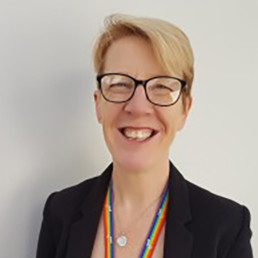
Written by Mel Lane
Mel Lane (she/her) is Head of Education at Pop’n’Olly. She has been a primary school teacher and teacher trainer for nearly 30 years and worked in schools on LGBT+ inclusion policies with thousands of children and school staff. Mel is a co- author of What Does LGBT+ Mean? (Pop’n’Olly, 2021).
“I don’t know what’s special about me… I don’t have anything special about me,” a 5-year-old once told me. I’ll be honest, I was shocked. How could a child not be able to say a single thing that made them feel proud of themselves? – Nothing that singled them out from everyone else.
It was a learning curve for me. I realised that knowing what makes you special isn’t something that children necessarily know about themselves. For whatever reason, some children really need help with identifying what makes them stand out, what particular skills, talents and unique attributes help to define them.
Since then, I’ve really worked hard to ensure that I give children the language they need to talk about themselves – language that they can take with them throughout life to help them feel good about themselves, and to raise their self-esteem.
Here are some things you can do with your class:
- Help children understand that they are made up of a complex mix of things, including how they look, their skills and talents, and their personality. Some of these change and some stay the same.
- Pick a few different children each day. Talk to them in spare moments and find out what they like/dislike and are good at. Give them the language to praise themselves…
“Wow Molly, not everyone can remember to feed their dog every day/draw Pokemon so well/give someone space in the line without asking. That’s part of what makes you unique and special. Don’t forget to tell yourself that and feel proud.”
- Actively teach children how to praise each other and how to accept compliments…
“I noticed that Tariq kept going when the maths was tough today/ was really careful when cutting out the pictures/ balanced that ball in PE really well. Who’d like to compliment Tariq? Did anyone notice anyone else they’d like to praise? Is anyone proud of themselves for something today?”
- Hold a ‘Teach your Talent Day’, where children work in small groups sharing what they can do with each other. I’ve seen children teach each other magic tricks; demonstrate how to do a backbend, explain how to look after a dog and teach how to draw a cartoon dinosaur. Every child has a skill, they just sometimes need help realising it.
Also, don’t forget yourself. You are unique and special too. Every teacher has a different set of skills that help them be great at their job and none of us are the same. Instead of comparing yourself to the person in the next room and convincing yourself they’re better, look for the things you’re good at. Look for those little achievements throughout the day. There is no one way to be a great teacher – you are great just as you are.
If you’d like to do some work on this with your class, our FREE Back to School: Identity Pack gives you lesson plans and resources to help children develop a sense of their own unique identity and feel good about themselves. Download it here.
An Educator’s Introduction to Culturally Responsive Teaching

Written by Eleanor Hecks
Eleanor Hecks is a writer who is passionate about helping businesses create inclusive and diverse spaces. She serves as the Editor in Chief of Designerly Magazine.
Today’s classrooms are more diverse than ever before. Students come from various backgrounds, whether cultural, linguistic or socioeconomic. They bring unique perspectives and experiences.
As the educator, your responsibility now extends beyond delivering the curriculum – it also involves fostering an inclusive environment where all your students feel valued, heard and empowered to achieve their true potential. Culturally responsive teaching is an essential solution.
What Is Culturally Responsive Teaching?
CTR is a research-based pedagogical approach that connects students’ cultural backgrounds with their learning. It focuses on recognizing the assets students can bring into the classroom instead of focusing on perceived shortcomings. CRT helps students engage in deeper learning and develop higher-level academic skills by making these connections.
Theories such as Lev Vygotsky’s Zone of Proximal Development and Jerome Bruner’s Scaffolding underpin CRT’s emphasis on building upon students’ knowledge. These approaches support the importance of connecting new learning to an existing schema, which is central to CRT.
Unlike teacher-centered traditional models, CRT emphasises the student. It integrates diverse cultural aspects into the instruction, tailoring the education process to the student’s needs. Since learning is meaningful and engaging, it promotes a sense of belonging, even among students belonging to minority or marginalized groups.
Why Is Culturally Responsive Teaching Necessary?
Implementing CRT is becoming increasingly necessary in today’s educational landscape. The traditional one-size-fits-all approach no longer addresses the realities of today’s classrooms. Here’s why CRT is growing in demand.
Addresses Diversity in Classrooms
Student ethnicity is growing. A 2022 summary released by the Department of Education showed that the student population comprises 6.5% Asian pupils, 6% mixed or black pupils and 2% belonging to other ethnic groups. These statistics reflect the growing diversity of classrooms in the UK. Standardised teaching methods fail to cater to this diversity, which leaves minority students disengaged and underrepresented.
Strengthens Student Engagement
Students are more likely to connect with and retain information when they see their identities reflected in the curriculum. CRT helps make learning more relevant to their lived experiences.
Promotes Equity and Inclusion
CRT seeks to reduce disparities in education by creating equitable learning environments that recognise and celebrate every student’s identity. Inclusive strategies benefit minority students and open opportunities for the majority to learn as the two groups participate in intercultural conversations and learn about each other’s cultures.
Prepares Students for a Globalised World
There is a direct, positive correlation between cultural and emotional intelligence. CRT equips students with the skills to understand and respect other people’s viewpoints.
Students who grasp that there are different cultures and beliefs grow into adults whose emotional intelligence (EI) makes them compassionate, open-minded and culturally sensitive. This emotional intelligence is responsible for between 27% and 45% of job success as a whole, emphasizing the importance of supporting students’ EI before they enter the workforce.
Develops Critical Thinking
Incorporating multicultural perspectives in classrooms challenges students to think critically about social issues, providing them additional context to understand the wide world around them.
How to Apply Culturally Responsive Teaching in Your Classroom
Adopting culturally responsive teaching doesn’t require completely overhauling your current working methods. Small, intentional changes can create significant impacts. Here are practical steps to integrate CRT into your teaching practices.
- Activate students’ knowledge by connecting with their cultural or personal experiences.
- Tie your lessons to real-world events or contemporary issues so students see their value beyond the classroom.
- Ensure your curriculum and resources reflect diverse authors and cultures.
- Consider your classroom’s physical and visual setup to be more inclusive of minority groups.
- Build strong student-teacher relationships and learn more about your students’ interests, cultural backgrounds and identities.
- Create opportunities for group projects and assignments.
- Attend workshops, read research and collaborate with colleagues to refine your pedagogic practices.
The Impact of Culturally Responsive Teaching
Culturally responsive teaching can transform both students and teachers. For your pupils, it strengthens their sense of identity, boosts academic achievement and allows for deeper engagement with their learning experience. For educators, it provides an opportunity to make a meaningful impact in their students’ lives as they contribute to a more equitable education system. Embracing CRT enables students to prepare for the multicultural world beyond their classrooms.
Empowerment, Inclusion, and Storytelling: A New Approach to History Education
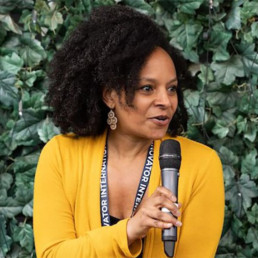
Written by Dana Saxon
Dana Saxon is an educator, writer, and family historian who seeks to address global inequities in education. Her organisation, Ancestors unKnown, changes the way pupils learn about history, themselves, and the world around them, providing opportunities for them to learn about marginalised histories and stories from their own communities.
Traditional history education can sometimes feel stale and uninspired – a series of dates and old white men who seem to have little or no relevance to the lives of today’s children. This approach, heavily focused on Eurocentric perspectives and the accomplishments of a select few, can leave many students feeling excluded and disconnected from the past.
But, as even Ofsted explained in their 2023 report about history education, “Every pupil is entitled to encounters with the richness of the past and the complexity of historical enquiry”.
A New Approach: Student Stories at the Centre
What if we reframed history education? What if we centred the learning experience around the unique stories of each child?
This is the vision driving Ancestors unKnown, a unique approach to history education that empowers young people by weaving their personal narratives into the larger context of local and global history.
At the heart of our methodology lies the belief that every child’s story is a valuable piece of the historical puzzle. We encourage students to explore their own family and community histories through oral histories and archival research. By interviewing elders, collecting family artefacts, and delving into local archives, children uncover the unique stories of their ancestors and the elders in their community, including their struggles, their triumphs, and their contributions to society.
Then, while our students are empowered to personalise historical research, we help them connect these personal narratives with the untold and often marginalised histories that have shaped our world. As a result, students learn about the contributions of diverse communities, stories about migration, struggles for social justice, and other hidden stories that lie beneath the surface of conventional historical narratives.
The Benefits of Ancestors unKnown
Our integrated approach fosters a profound sense of belonging and empowerment. When children see how their own stories connect to the larger historical narrative, they develop a deeper understanding of their place in the world. They begin to see themselves as active participants in history, not just passive observers.
Furthermore, by sharing their family histories with their classmates, children gain valuable insights into the diverse experiences and perspectives of those around them. This fosters empathy, understanding, and a greater appreciation for the people and communities around them.
With our approach, Ancestors unKnown is making history curriculum more inclusive and equitable. By centring the experiences of diverse communities and highlighting the contributions of marginalised groups, we challenge traditional narratives and create a more representative understanding of the past.
“Our community interviews were really successful!” shared a primary school teacher about their Year 5 Ancestors unKnown project.” We interviewed adults from South America, England, France, China and Nigeria! The children asked some really interesting questions and really enjoyed listening to the different family and community stories.”
Bringing Ancestors unKnown to More Classrooms
Ancestors unKnown provides schools with a toolkit and ongoing support to implement our programme during one school term for Y5 or Y6. We also offer teacher training, parent/community engagement workshops, and access to a network of local historians and storytellers as guest lecturers.
We believe that by empowering teachers, students, and their families with the tools and knowledge to uncover their own historical narratives, we can create a more inclusive and engaging learning experience for everyone.
Ready to transform history education in your school? Learn more about our programme and contact us to bring Ancestors unKnown into your classrooms.
Let’s work together to empower the next generation of historians to tell a different, more inclusive story about the past – a story that includes their ancestors.
Our identities: A fixed entity?

Written by Becky Shewell
My name is Becky Shewell and I am a Qualified Teacher of the Deaf, graduating with an MSc in Deaf Education with Distinction from The University of Manchester in 2023. I am the creator and founder of The Shewell IntersectionaliTREE, a database of books with positive and incidental role model representation, so children can see themselves to be themselves.
Often, when people think about their identity, the ‘big’ categories spring to mind. Their gender, sexuality, ethnicity, belief systems and so on. Of course, these form our identities, but during my time running workshops and talks as creator/founder of The Shewell IntersectionaliTREE, I’ve concluded that identities are much more nuanced than this. I usually start my workshops asking people to name five words they identify with and what surprised me is that often, people name traits related to their day-to-day lives. Words like dog-lover, vegan, mother, educator, singer and so on. I found this fascinating, as I didn’t expect this, thinking they would choose words that fall into much broader categories.
As for me, I identify as a queer, disabled woman but I do not necessarily identify by those things first. I am also a cyclist, sister, partner, creator and educator. The second set of traits are those which I embody on a day-to-day basis, that I really relate to. They are linked to the fact that I’m a queer, disabled woman because those overarching identities play into the life that I have shaped, and that has been shaped for me by external factors. I am a cyclist, because this is a low impact sport that I can participate in, as I have a form of hip dysplasia that stops me from being, say, a runner. I am a sister, which is a large part of my identity as a woman. A creator, because I have experienced challenges as a queer woman and an educator, because of the privileges of growing up in a loving environment and wanting to give that back. This is what speaks to me when I think about intersectionality and when I develop content to support our intersectional young people, through The Shewell IntersectionaliTREE, a library database of books with diverse, intersectional characters that our young people can relate to.
Our identity is not made up of single, fixed categories, but how these play out to create deeper, more meaningful traits that we really share when we want somebody to know about us and what makes us tick. It is a result of how all these intersecting identities shape us over time, as well as the social factors that have granted us privilege and power or discrimination and marginalisation.
Bronfenbrenner’s Ecological Systems Theory (1977) (Bronfenbrenner’s Ecological Systems Theory) even goes as far to draw into question how much our belief systems are really a choice, and not just shaped by our experiences, such as the family, place and opportunities we are born into. Indeed, our environment has a high impact on us; shaping our world view, choices and how we interact with each other. This was a focus on the PDGipEd/MSc Deaf Education course at The University of Manchester, where we considered differing parental views, to ensure the best care possible.
So, when we think about identity, are we thinking about it in a nuanced enough way? I think now, we are doing a good job of presenting a diverse range of characters on media platforms with d/Deaf and disabled characters on soap shows like Waterloo Road and Eastenders, queer shows like Heartstopper readily available on Netflix and a wide range of storybooks with intersectional representation in the mainstream bookstores. Yet, in a recent Masters project I carried out, participants found that the portrayal of these characteristics, or identities, is very much focussed on the identity trait and usually one identity trait, rather than a more nuanced and intersectional approach. For example, in d/Deaf storybooks, the focus is often on the fact that the character is d/Deaf and how the character could manage this. But being d/Deaf isn’t the entirety of somebody’s personality. They could also be interested in superheroes, or have two mums, or go to India for Diwali each year and this might be just important to them. Being d/Deaf is a part of their experience, which doesn’t necessarily need to form the whole of the plot line and perhaps, could be more powerfully represented as a part of their experience.
There is a rise of books with this type of incidental representation; for example, where the plot may be about a d/Deaf character having adventures as a superhero, and they just happen to take out their hearing aids for bedtime. Does this not give our diverse children and young people a chance to feel normalised, to see themselves reflected in positive, everyday role models for better self-esteem? I think, in our world, we are in danger of polarising and simplifying people too much. Why not recognise that we are nuanced and complex individuals, with a range of feelings, experiences and characteristics; both good and bad? I think this would encourage young people, and wider society, to develop more acceptance and understanding both within and outside of themselves; preventing narrower, polarized viewpoints that, I feel, seem to pervade the current mainstream media.
No child left on the sidelines: ParalympicsGB's Equal Play Campaign and the push for inclusive PE
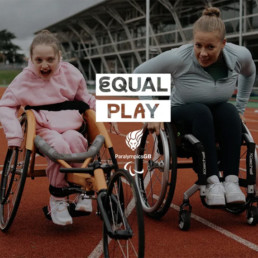
Written by ParalympicsGB
ParalympicsGB is the UK’s largest disability sports charity and relies on the support of its commercial partners to deliver a world class environment where athletes can achieve their personal best performances and break down barriers for all disabled people. Further details are available at https://paralympics.org.uk/
Physical education (PE) has always offered young people the chance to develop confidence, teamwork, and physical literacy. However, for millions of disabled children across the UK, inclusive and meaningful PE is still largely inaccessible. In response, ParalympicsGB has launched their Equal Play Campaign, a transformative initiative to ensure every child, regardless of ability, has equal opportunities in school sports. This movement comes at a crucial time, aligning with the Government’s review of the national curriculum. With so much at stake, the campaign’s message is clear: action is needed now.
A curriculum review with high stakes for disabled pupils
The ongoing curriculum review holds immense potential to address systemic issues that have long affected disabled pupils and those with Special Educational Needs and Disabilities (SEND). Currently, PE is not considered a core subject, which means it often takes a back seat to academic priorities. Even when PE is available, it frequently focuses on traditional sports, leaving out disabled pupils who require adaptive and inclusive activities.
ParalympicsGB has raised serious concerns that disabled young people are being overlooked in the review. In a society where 1.5 million disabled children are missing out on essential physical activities, this is unacceptable. Alarmingly, only one in four disabled children regularly participate in school sports, denying them the chance to boost their development, social skills, and mental well-being. This is a disparity we can no longer ignore.
The importance of breaking barriers
Disabled pupils face a complex array of barriers that differ significantly between mainstream and special schools. Addressing these challenges requires a comprehensive and inclusive approach. Crucially, we must understand that disabled pupils are not a monolithic group; their needs vary widely. From a lack of specialised equipment to insufficient teacher training, the obstacles are varied but solvable with the right strategies.
ParalympicsGB advocates for a more holistic understanding of physical literacy, one that celebrates diverse ways of being active. This vision moves beyond traditional sports to include adaptive and non-competitive activities, turning PE into a positive and empowering experience. The impact of inclusive PE is profound: it not only improves physical health but also fosters social inclusion, boosts self-confidence, and establishes lifelong habits of well-being.
Transforming the culture of PE
Creating inclusive PE requires a cultural shift in how physical education is perceived and delivered. Currently, the existing model often leaves disabled children feeling excluded or unable to participate meaningfully. ParalympicsGB emphasises the need to reimagine PE, prioritising equity and inclusivity to ensure every student can engage and benefit.
A key factor in this transformation is empowering teachers. Teachers are crucial to implementing change but often lack the resources or training to adapt lessons for disabled pupils. ParalympicsGB stresses the importance of revising teacher training programs to include robust, practical modules on inclusive physical education. By equipping teachers with the right skills—such as modifying activities to accommodate diverse needs—we can ensure that all pupils have equal opportunities.
Representation also plays a critical role. Increasing the number of disabled people in teaching positions can make PE more relatable and inspiring for disabled pupils. Teachers with lived experiences of disability offer unique insights and can act as powerful role models. Seeing someone who shares their experiences and challenges can fundamentally change how disabled children view their own potential.
Practical solutions from the Equal Play Campaign
The Equal Play Campaign puts forward targeted, achievable solutions aimed at building a more inclusive PE landscape:
- Empowering teachers: Providing continuous professional development and resources, such as workshops, guides, and access to best practices, to help teachers deliver inclusive lessons confidently.
- Adapting teacher training: Reforming initial teacher education to include strategies for inclusive PE, ensuring teachers are well-prepared to support all pupils effectively.
- Redefining PE’s role: Shifting the emphasis from competition to physical literacy. This approach makes PE about personal growth, joy, and inclusivity, rather than just winning or losing.
- Boosting representation: Encouraging disabled individuals to become teachers, thus bringing valuable perspectives to schools and inspiring pupils.
These changes are not just aspirational but necessary. By implementing these measures, the Government can take significant steps toward educational equity, ensuring no child is left out.
The time for change is bow
The curriculum review presents a rare chance to set new standards for inclusivity in schools. ParalympicsGB’s Equal Play Campaign underscores that PE should be a welcoming space for all children to experience the joy of movement. This effort is about more than just sport; it represents a commitment to a society that values every member equally.
For those wanting to learn more, visit ParalympicsGB’s website. Teachers, parents, policymakers, and community members all have a role to play in creating an education system that genuinely leaves no child behind.
By advocating for inclusive PE, we are laying the groundwork for a future where diversity, equity, and inclusion are not merely aspirational values but everyday realities. Let’s ensure every child, regardless of ability, gets the chance to play, grow, and thrive.
Addressing the impact of global conflicts
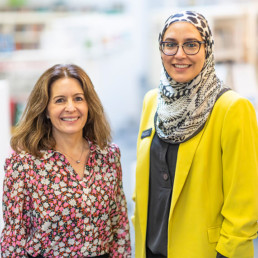
Written by Claire Shooter and Monia Zahid
Claire is Deputy Head Pastoral and DSL with a keen interest in EDI. She changed career and went into teaching 16 years ago after her children were born and has never regretted it. Over this time, she has enjoyed a range of roles including Head of Spanish and Head of Year.
Monia is Head of Equity, Diversity and Inclusion and teacher of Economics at Haberdashers’ Boys’ School. She oversees EDI provision at the school and is passionate in driving change for the whole school community.
If you are to take just one message from this blog, then let it be that schools must always be safe spaces for students, especially in times of global unrest. Over the past year, our school has learned invaluable lessons about how global conflicts can ripple into a school community, affecting students in profound ways.
Our school, located just outside North West London, has a vibrant and diverse community, with active faith and cultural societies, a multi-faith prayer room, and celebrations of key festivals from many religious traditions, including Eid and Chanukah. We would say that our diversity is our ‘superpower’ and our students have ample opportunities to learn about each other’s faiths.
So the immediate weeks following October 7th 2023 threw an unprecedented and emotional challenge.
At our initial assembly following the horrific events of that day, we took a moment to reflect on the events unfolding in Israel and Gaza, honoured the casualties, and reminded students not to engage in divisive political discourse that could lead to conflict or tension within the school.
However, many of our Jewish students felt frustrated and unsupported, feeling that we were minimising their pain by not acknowledging the attack for what it was—a terrorist act. They felt that if such violence had occurred in any other part of the world, it would have been called out more forcefully. Many of our Muslim students expressed their fears about being targeted due to their Muslim identity. They voiced frustration that the suffering of innocent Palestinians was not being acknowledged, while stereotypes and misinformation about Muslims went unchallenged.
Both Muslim and Jewish students were living in fear, be it Zain who worried about his hijab-wearing sister, or Max who worried about wearing his Star of David chain. Both felt nervous to show their identities in public.
This marked the start of a week of difficult conversations as our student body articulately and respectfully voiced their concerns. We quickly found ways to offer support. One of the first initiatives was the student-led prayer service, a daily gathering attended by many students who wanted to reflect, pray, or simply share a sense of community.
At the end of that week our Headmaster addressed the entire school in a special assembly. He acknowledged the emotional toll on our community, quoted students who had bravely shared their perspectives, and provided historical context for the conflict. He reframed our message of unity and respect, encouraging everyone to treat each other with kindness and grace. The assembly ended with a moving moment of reflection led by our Faith Assembly Committees.
Social media was another challenge to address. Algorithms often amplify one-sided views, and young people increasingly rely on platforms like Instagram and TikTok for their news, rather than traditional sources. These platforms often mix fact with fiction, viral conspiracy theories, and disturbing images. We provided clear guidelines on how to navigate social media responsibly, reminding students to think critically before liking or sharing content and to be mindful of the digital footprint they leave behind. When inappropriate posts appeared, we used a combination of education and sanction to address issues.
We also realised that staff members needed support, unsure of how to engage in conversations for fear of being seen as political. Many felt isolated, and simply taking the time to approach another colleague and acknowledge the difficulty of the situation went a long way toward breaking down those feelings. By fostering an environment where everyone, regardless of their political views, could talk openly and with empathy, we began to rebuild a sense of community. It’s not about politics, it’s about humanity.
While we acknowledge that there is still much work and education to be done, we are committed to trying to guide our students through the complexities of the world around them. Our students have voiced appreciation for the fact that tensions are left outside the school gates, and it’s a safe place for all. Whilst we don’t have all the answers, we’re committed to ensuring that:
– Anti-racism efforts also incorporate discussions on both antisemitism and Islamophobia, so that all students, regardless of their background, can become allies in challenging hate.
– We ask the difficult questions and acknowledge the emotional weight of these issues—not to take a political stance, but to show empathy and understanding.
– We create opportunities for students to learn from diverse views, helping them understand that dialogue is not about winning arguments but about hearing other perspectives and learning to ‘disagree agreeably’.
– We recognise that this work is ongoing, and schools need to create spaces for continued dialogue, assemblies, and reflection.
– Above all, we strive to create a safe and supportive space for *all* students, where diversity is celebrated, and the narratives students encounter promote unity, respect, and mutual understanding.
What does it mean to our families when we support bilingual literacy?

Written by Emma Sheppard
Emma founded The MTPT Project, the UK's charity for parent teachers, in 2016 when on maternity leave with her first child. She has 12 years experience as an English teacher, Lead Practitioner and ITT Lead, and now runs The MTPT Project full time.
This is a vulnerable blog to share publicly. If you follow me on LinkedIn, it will reveal the hard work and heartache behind the upbeat and practical strategies around bilingual education that I often share.
Of course, we save our shiniest achievements for social media platforms but over the last few weeks – in the real world – I have felt keenly, the crushing failures of being “immigrant mum”.
For context, I am an educated middle-class British former teacher living in France with my bilingual children and French husband. My children were born in the UK, have been fully bilingual since birth, and now attend French state primary school. I’m a fluent French speaker (and have a state-issued certificate to prove it) work in English and socialise in both languages.
Sounds dreamy, right?
But sometimes, I feel as if I am losing my children – that they are so culturally embedded in the country we live in, that they have no connection to the identity of their birth country. My identity.
This fortnight, we have been learning about Advent in our home-learning English lessons. They don’t go to school on Wednesdays, you see, because it’s France.
My son, who had a year of lockdown education, is au fait with the characters. He was, after all, the donkey in his Reception nativity and plodded along to Bethlehem with Mary and Joseph. He best friend Gabriel was… the angel Gabriel.
My daughter, who has been educated in the secular French system since pre-school, has a vague understanding of the baby, called Jesus. The star? Joseph? Virgin birth? Heavenly hosts? Gold, frankincense and myrhh? Even the word ‘shepherd’ in English? All these cultural indicators so essential to the British primary education experience? Not a clue.
It gets worse: for the last three years, we’ve attended the carol service run by the local American church. I alone in my family know the words to Silent Night. My husband and children are ignorant to the joy of “Glororororororia” or “Fivvvvee go’old ringggsss!” and as such, they can’t sit through a full service. I hissingly insisted my husband remove them (and himself) somewhere between Royal David’s City and Angels in the Realm of Glory and – French and relieved – they went to eat waffles and ride fairground rollercoasters in le marché de noël.
Extended writing – the lovely recipes and stories and letters you’d expect in lower KS3 – simply aren’t required of my children yet in the French state system. Admittedly, their grammatical knowledge is fast surpassing my own, but mostly they are asked to copy, or write short responses to comprehension activities.
They have never been asked to be a Victorian maid or a to persuade anyone to save the rainforest. They have not written a diary entry from a ship in the middle of the Atlantic, or a newspaper article about a volcanic eruption. Maybe creativity, generally, will never be required of them?
The request to write the Nativity story therefore resulted in meltdowns on all fronts: my son can’t bear the idea of more than two sentences and disappears into the ether of his daydreams; my daughter can’t remember how to spell ‘all’, even though it’s been on her spelling list for millennia.
My children are spectacular: there is no need to qualify this with any reasons why. They just are.
But they are not British, and they have no other encouragement to be British than me, their mother. Ensuring they retain a sense of this identity has become a base urge in me. They will know who Shakespeare is. They will eat jacket potatoes. They will understand the culture importance of a Harvest Festival. Failure simply isn’t an option.
But a lot of the time I feel like a lone salmon, swimming against the current. And increasingly, I’m experiencing the anticipatory grief of becoming the mother of two French children.
For the first-generation immigrant parents in our school communities, how keenly is this loss also felt?
Do they, too, look at their children and see huge holes where a shared identity should be?
And as schools, what can we do to support families who might be going through similar experiences?
(Here come those upbeat, practical strategies…)
- Understand, appreciate and acknowledge (if you can) the cultures of your school communities – including the educational cultures
- Value and encourage the use of the home language – never fall into the trap of thinking that one language leads to an inability to acquire another because the opposite is true – languages feed off one another and grow together
- Value languages, and teach them well – from the earliest possible age
- Create bilingual streams if appropriate for your school context
- Introduce Community Language GCSEs and A Levels as far as your timetabling or extra-curricular offer can support – and involve parents in their children’s preparation for these exams
- Research community language hubs and signpost these to parents if you don’t have the capacity to ‘in house’
- Align language with culture – food, traditions, literature, film, history, sports – and take opportunities to celebrate these
- Foster opportunities where parents can make connections and build their own language communities
As cultural diversity in our schools increases, assumptions of monolingualism in our curricula and communities will only become a hindrance. Celebration and practical support for families aspiring to full bi- or multilingualism will bring out the best in our students and support the full complexity of their identities.
My Becoming
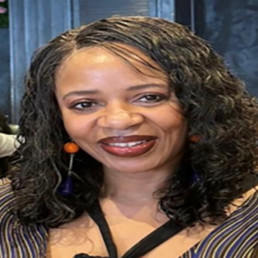
Written by Caroline Anukem
Caroline Anukem is Equity, Diversity and Inclusion Lead at Beaconsfield High School in the UK. She is a driving force, a change-maker, and a relentless advocate for equity.
Once upon a time, in the 1980s village of Woolton, Liverpool, my educational journey began at Notre Dame, a Roman Catholic Grammar School with a simplicity and homogeneity that defined the era. Diversity, an unfamiliar term, seldom found its way into our vocabulary. Inclusivity, if acknowledged at all, meant conforming to a narrow mould. The notion of an EDI Lead was beyond imagination, and conversations about inclusion were but a whisper in the wind. I will definitely one day take a trip down memory lane and share my experiences.
Fast forward to the present day, where the quaint village experience meets the vibrant landscape of Beaconsfield High School. Here, I am privileged to be the school’s EDI Lead. Over the years we have witnessed an extraordinary transformation. Our school, once bound by conformity, now embraces the range of backgrounds, cultures, and identities. Diversity is not just acknowledged; it is a cause for celebration. This celebration of diversity and citizenship was ignited during our inaugural Global Citizens Week celebration. Inclusion is not just a buzzword; it is consciously embedded into the very aspect of our educational system.
The positives of this transformation are as abundant as the perspectives, worldviews, and lifestyles our students now encounter. They merge a rich foreword thing, diverse and inclusive learning experiences, the invaluable lessons of empathy, respect, and the strength derived from unity in the face of diversity. We are not merely preparing them for a world where these qualities are admirable; we are preparing them for a world where these qualities are essential. Yet, as we bask in the glow of progress, the journey towards true equity and inclusion continues. Barriers, some dismantled, others still standing, remind us that our work is far from over. As the EDI Lead, I recognise the need for more diversity among our educators and leaders. Our curriculum must reflect a global perspective, ensuring every student feels seen and heard.
The concept of an EDI Lead, once unimaginable, now stands as a beacon. It should not be a rarity but a standard that is imperative at the core of our education system. I believe that EDI and Safeguarding share common ground promoting a safe and secure environment. Our aim is a society where uniqueness is embraced, where every student sees themselves reflected in their education, and where equity is not just a distant goal but a living reality.
In conclusion, the journey from the simplicity of my village education in Liverpool to the vibrant inclusivity of BHS is a testament to our progress. Yet, it serves as a reminder of how much further we can go. As an EDI Lead, my commitment is to develop a learning environment thriving on differences, not just educating minds but nurturing hearts, building lasting friendships, relationships and encompassing the British Values in our daily practices. The journey toward a more inclusive and equitable educational landscape continues, one story at a time.
Positive Ways to Talk About Difference, Equality and Discrimination with Children
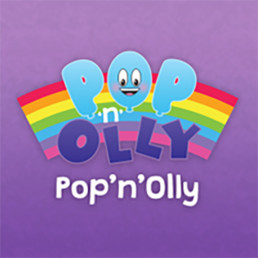
Written by Pop 'n' Olly
Pop‘n’Olly is the UK’s leading LGBT+ educational resource provider for primary aged children, parents, carers and teachers. The company's resources and books are being used in primary schools across the UK as well as globally in over 70 countries. www.popnolly.com
When I ask children to guess when same-sex marriage was introduced they come up with all sorts of wildly wrong suggestions… ‘The 1950s?’ they say and I indicate it’s a bit more recent. ‘The 1960s? The 1980s, 1990s?’ they throw out. When I tell them it was 2013 they are usually staggered – something that they’ve known all of their lives is so recent!
We live in a country that has not only legalised same-sex marriage but also has the Equality Act (2010) which protects a wide range of people of all ages, including people with different sexual orientations and trans/non-binary people. This is something to be celebrated with children. It’s not just in their school that staff encourage them to see other people as different but equal, but also in the whole of the UK – and that’s enshrined in law!
Prejudice relates to beliefs, thoughts and feelings about someone or a group of people. Prejudice is usually negative. Discrimination relates to actions against someone because of their identity or characteristics.
Discrimination is an action against someone because of their identity or characteristics. It grows out of prejudice, which is a (usually negative) belief about someone. As teachers, our job isn’t to police children’s thoughts, but instead, to help them see the wonderful variety of people who exist and help them not be afraid of these differences.
Using visuals, drop-in references, and explicit teaching we can ensure that children’s view of the world is one where there are millions of ways to be a human and some of these ways look different from them.
Celebrating differences isn’t just about helping all children feel good about themselves but it affects how we see others. When faced with differences we can help children to see those differences as strengths. Whilst we have many things in common, humans have evolved to be widely different across the globe and our experiences living different lives, both in the UK and elsewhere means we have different skills and knowledge. Sharing these differences allows us to learn from each other and to see the world through others’ eyes – sparking new thoughts, new ideas and new perspectives.
Here are some ideas you might try out with your children:
- Actively teach children about The Equality Act (2010). Use our posters, lesson plans and resources to ensure that children understand that treating people fairly and equally is part of the culture and law of the UK.
- Help children understand that people are not treated equally around the world and that change happens because of action. Examples of this might be the Stonewall Riots in the US, and the legalisation of same-sex relationships in the UK – that came about because of the work of Leo Abse MP.
- Instead of ‘Heads Down Thumbs Up’ at the end of the day, get the children to play a game where they partner up and have to find two things the same and one thing different from each other which they then share with others. Children could then try and find others who match (or are different) – or even make up their own rules for the game.
- Learn a ‘Sign of the Day/Week’ to help children understand that communication is different for different people.
- Play Paralympic sports in P.E. such as seated volleyball or goalball with the same competitive enthusiasm as other school sports (these were so popular with my Y6s!)
- Use CBBC’s ‘My Life’ series to help children learn more about other children’s lives, such as ‘When Mum Becomes Dad’ and ‘Mae’s Guide to Autism’.
- Ensure that your classroom displays represent a wide variety of people of all shapes, colours, abilities, genders, etc.
- Discuss scenarios with children about people who are experiencing discrimination. Talk through ideas on how this person may feel and what children could do if they witnessed this on the playground for example.
It is very hard to change the world, but we can make our schools somewhere where everyone is welcome and make our little bit of it more welcoming. We can help all children feel good about themselves by celebrating differences and we can help them to see that difference is not something to be afraid of, but a strength.
You can download our Discrimination, Prejudice and Equality Medium Term Plan, together with all the lesson plans, videos and resources that you need to work with your UKS2 class on this.
How My Experiences with ADHD in Different Workplaces Led to a PhD and Training Programmes for Businesses and Schools

Written by Steve Ollington
ADHDer studying the pros and cons of ADHD in the workplace, with 19 years in digital marketing, and more recently running ADHD training.
I’m Steve Ollington, and I’m currently undertaking a PhD at Swansea University, supervised by Professor Brian Garrod, focusing on ADHD in the workplace. My research journey started with a personal observation: despite having a consistent skill set and high level of experience in my profession, I noticed that my performance varied significantly depending on the workplace environment. In some settings, I thrived; in others, I struggled to achieve the same level of productivity and job satisfaction. This discrepancy led me to examine how different workplace environments interact with ADHD traits, not just in terms of challenges, but also in enabling the often-overlooked strengths associated with ADHD.
Observing the Role of Environment in My ADHD Performance
In some roles, I was given autonomy and flexibility, which allowed me to excel. I had the freedom to approach tasks creatively, was trusted by managers, and felt supported by colleagues who understood different thinking styles. In these settings, I could harness the strengths that come with ADHD, for example innovative thinking and alternative (but effective) problem-solving. My performance was high, and I felt truly engaged in my work.
In other workplaces, however, I encountered rigid structures and strictly enforced processes with little flexibility. There was often limited understanding of alternative approaches to work, and I felt pressured to conform to methods that didn’t align with how I function best. This rigid structure amplified the challenges of ADHD, while stifling my ability to bring my strengths to the forefront. In these environments, I found myself struggling as a result.
Recognising the Potential of ADHD Strengths in the Workplace
Through these contrasting experiences, I realised that while my ADHD challenges remained constant, my ability to utilise my strengths was significantly influenced by the environment, including the acceptance of my differences by those around me. Some workplaces allowed me to maximise my capabilities, while others hindered them. This insight led me to pursue a PhD, focusing on ADHD in professional environments. Rather than just examining the difficulties faced by ADHD employees, I wanted to highlight the strengths and explore the specific workplace conditions that either foster or inhibit these strengths.
Research supports the notion that ADHD brings unique strengths. Dr Heiner Lachenmeier’s book ADHD and Success at Work, for instance, describes how people with ADHD often have a “wider breadth of association” due to a reduced filtering of incoming information, which enhances creativity and problem-solving abilities.
Research by Dr Nancy Doyle on neurodivergence in the workplace, combined with studies on creativity and imagination by White and Shah demonstrate that ADHD individuals can excel in environments that embrace cognitive diversity. Creativity, for instance, is often heightened in ADHD individuals due to the way they process information, thinking beyond traditional boundaries. However, these strengths can only be fully realised in workplaces that are flexible, supportive, and open to alternative working styles.
Dr Edward Hallowell also discusses this in his book Driven to Distraction at Work, noting that ADHD can fuel high energy, hyperfocus, and enthusiasm when supported in the right way. Additionally, Prof Amanda Kirby and Theo Smith, in The Power of Neurodiversity at Work, as well as Leanne Maskell in ADHD Works at Work, advocate for environments that understand and embrace neurodiversity, highlighting the benefits employees with ADHD can bring to the workplace.
Developing Targeted ADHD Training Courses
This studying inevitably led to increasing my own understanding of ADHD and its impact on my work, and the more I learned, the more it became evident that many workplaces lack the necessary understanding and support for neurodivergent employees. Despite increased emphasis on diversity and inclusion, neurodivergence (including ADHD) is still very often misunderstood, with much of the current training being very broad and general, not focusing enough on individual conditions. I saw, and experienced, the need for specific training to address not only the challenges but also the strengths associated with ADHD, and the resulting understanding from workplace peers who might have neurotypical only expectations of skills like communication and approaches to tasks.
This realisation led me to transform my PhD literature review into two targeted training courses. The first course is designed for businesses, specifically aimed at training managers, HR, and colleagues of people with ADHD, focuses on understanding ADHD from a balanced perspective, covering how ADHD employees think differently, the areas in which they may need support, and how workplaces can harness their unique strengths. It encourages flexibility, trust, and space for creativity, which are key to enabling ADHD employees to thrive.
The second course is geared towards educators, providing ADHD training for teachers, TAs, and SEN staff, to equip them with the knowledge to reassure ADHD children and teenagers on how ADHD doesn’t have to limit them as they grow up, and that in fact they their ADHD also brings strengths, such as creative thinking and resilience. By emphasising these positive traits, educators can help ADHD students see their future as one filled with potential and opportunity.

